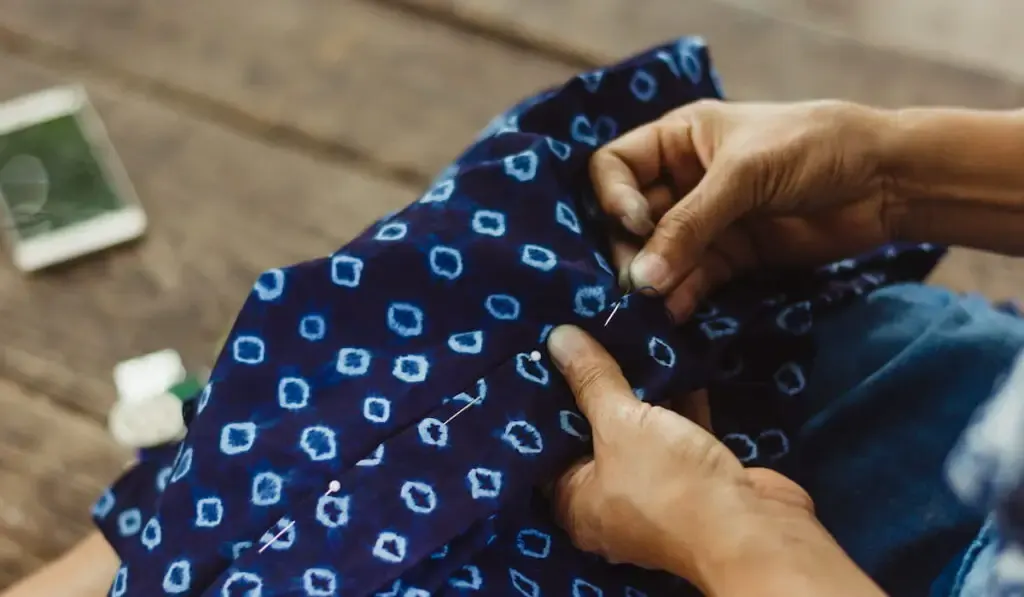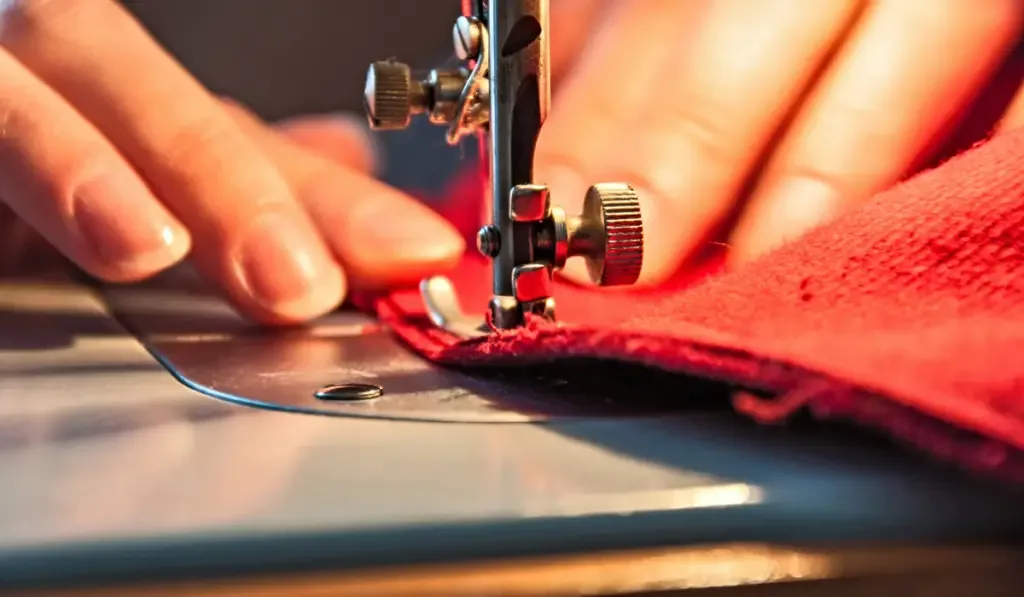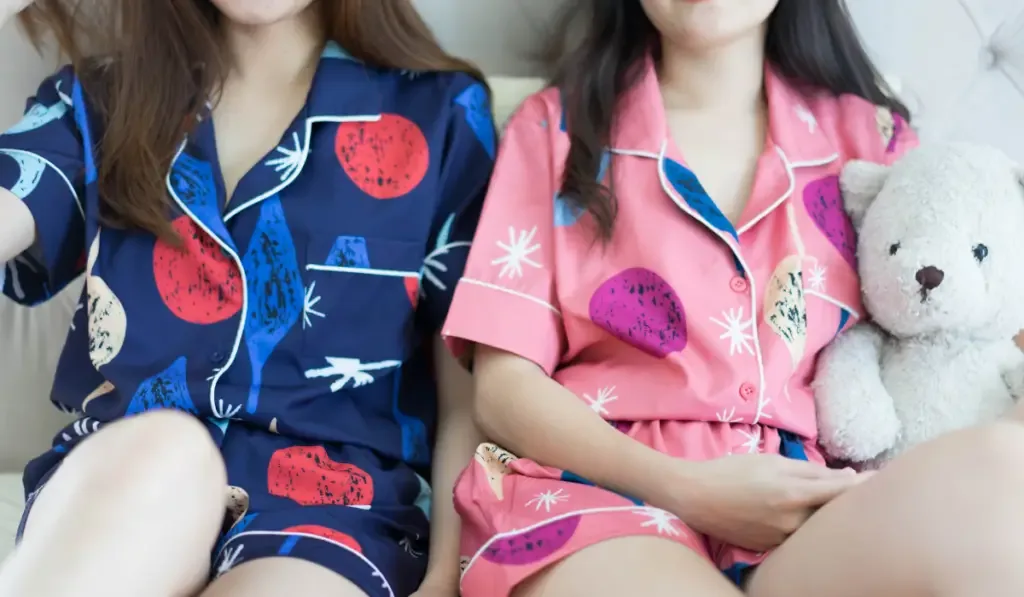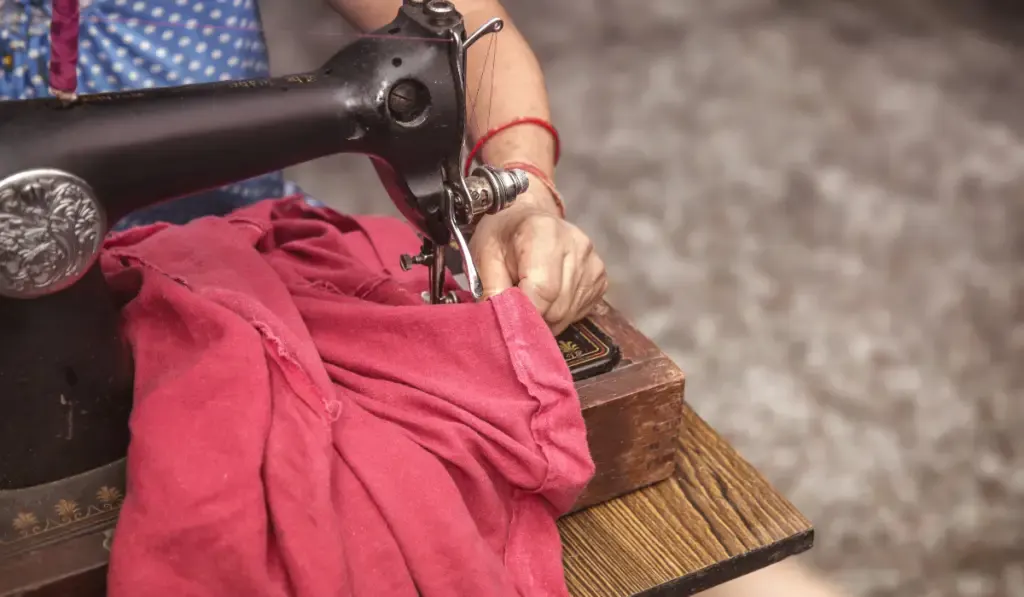I started sewing three years ago (as a hobby) because I love expressing my creative ideas through design. If you also love sewing, you know the importance of choosing the right hem.
Hems provide a polished finish to your garments. They also ensure seams last longer. If you choose the wrong hem type, your garment will miss the impeccable results you desire. Therefore, understanding different hem types and where to use them is crucial.
Whether you are a beginner or a seasoned sewer, this post is for you.
Explore nine types of hems every sewer should know. They will earn you a competitive advantage in the vast and creative sewing world.

1. Blind Hem
A blind hem is nearly invisible on garments, hence its name.
Creating blind hems involves folding your garment to conceal the stitches on the outside.
This discreet hem leaves small stitches visible on the inside of your garment. To achieve a perfect blind hem:
- Press the hemline and fold the fabric to the desired width.
- Stitch your garment from the wrong side using a thread of the same color.
- Align the folded fabric on your sewing machine and ensure the needle pierces a few threads from the fold.
- Press the hem using a warm iron to give your fabric a polished finish.
The blind hem comprises straight and zigzag stitches. You can use it on lightweight fabrics such as silk and satin.
2. Double Fold Hem
As the name suggests, a double-fold hem involves folding the edge of your fabric twice before sewing. Double folding ensures complete tuck-in of the raw edge to prevent fraying.
The double-fold hem is the most durable and commonly used. You can sew it in the following steps:
- Turn your fabric to the wrong side and measure the hem allowance.
- Fold the hem fabric in two equal folds successively. You can also make the first fold bigger than the second fold.
- Press your garment along the fold and ensure it is straight.
- Stitch using 2.5-length inside the folded hem on the wrong side of your garment. You can hand stitch using running stitch but ensure you backstitch at the beginning and the end to prevent ‘running back of stitches.’
- Finish your hem by pressing to make the thread blend into your fabric.
The double-fold hem is ideal for woven rather than stretch fabrics. It is commonly used because it can withstand many washes.

3. Frayed Hem
A frayed hem is an unfinished raw-edged hemline on a fabric.
It is most common in skirts, shirts, and denim jeans.
In addition to protecting the hem of your garment, a frayed hem complements its texture. It also creates a relaxed vibe to your clothes.
Frayed denim jeans, skirts, and shirts come with frayed hems from the designers. However, you can customize the hem to your preference in the following steps.
- Ensure you have the ideal cloth length. For example, the distance between your shoe to the frayed hem should not exceed two inches.
- Using a ruler or tape measure, mark the distance you want to fray using a piece of chalk.
- Fray your garment to your preference using a pair of scissors and tweezers. Make the fray messy and scraggly for a perfect touch of texture.
- You can also pull off some threads from your fabric within the fray area.
Note that frayed hems are ideal for jeans and firm-weave fabrics. They enhance the aesthetic of your casual wear.
4. Rolled Hem
A rolled hem is narrow and barely visible as it makes a tiny fold on your fabric edge. You need a special sewing machine foot to make a rolled hem.
Rolled hems are ideal for lightweight fabrics such as silk, chiffon, and light cotton. You can sew a rolled hem in the following steps:
- Measure ⅛ of an inch from the edge of your fabric and make a normal stitch using your machine. The ideal stitch length should be 1.5-2mm.
- Turn over the fabric on the hem allowance to the wrong side about 3mm from the stitch line from the first step.
- Press your fold to obtain a straight line 3mm away from the stitches.
- Sew another line directly on the first stitch line.
- Trim the thread and press flat.
- Cut the fabric on the seam allowance (wrong side) and turn over the fabric along the original sewing line.
- Your hem should be about ⅛ of an inch (3mm-5mm). Press the hem and stitch on the previous stitching line.
- Trim the thread and press from the wrong side of your fabric.
You can use rolled hems on clothing, handkerchiefs, table napkins, and home decor fabrics.

5. Single Fold Hem
A single-fold hem is made by folding the fabric back on itself once before stitching it. Unlike most hems where you hide the edge of the fabric, a single-fold hem exposes the edge on the backside.
You can hand-sew this hem or use a machine. The single-fold hem is the easiest to sew in the following steps:
- Neaten your fabric edge all around to prevent fraying because it is exposed. You can use a zigzag or server on the raw edge.
- Measure the hem length and mark all around the fabric using pins. This helps you have a uniform hem.
- Fold the fabric towards the backside and press. A flat press is preferred after removing the pins to conceal their marks.
- Stitch your hem using a machine or by hand sewing. Although machine stitching is faster, it’s more visible. Hand stitching takes time but has a neater finish.
6. Piped Hem
A piped hem is a tiny fabric pipe attached to the seam of a garment.
Piped hems are common in pajama pants, sleeves, and fabrics used in home decor.
Here are the steps to follow when making a piped hem for your pajamas:
- Measure how high you want your pipe to be from the hemline.
- Draw a straight line from one side of the leg to the other.
- Turn the bottom inside out and undo the existing hem. Iron after undoing the hem to remove creases.
- Fold your fabric into half and cut two pieces. Hold them together using pins.
- Sew it along the pinned side and press the seam allowance open
- Create binding pieces by cutting two pieces, each 13mm wide (½ inch), and fold each piece in half.
- Line up and pin the right side of the pressed edge to the right edge of the new cuff.
- Sew the cuffs and place them on your pajamas through the wrong side.
- Stitch the hem around the edge and press for a perfect finish.
Piped hems make your garments more appealing. They also reinforce the hems.

7. Baby Hem
The baby hem is a small rolled hem done on the machine without a hem foot. It adds to the visual appeal of light fabrics such as silk and light cotton sheets.
You can sew a baby hem in the following steps:
- Measure ⅛ inch below your fabric’s hem allowance and stitch all around.
- Press the fabric to the wrong side in the stitching line.
- Stitch ⅛ inch from the bottom folded edge.
- Trim excess fabric and roll the bottom towards the wrong side to create a fold.
- Stitch the center of the fold all around to obtain two lines on the wrong side and one on the right side. That is a baby hem.
A baby hem is not ideal for heavy fabrics because it is difficult to create small folds. You can, however, use it on any light fabric where you don’t want a noticeable hem.
8. Turned Hem
Turned hems reveal the stitching on the outside of your garment. They are, therefore, ideal for casual wear.
You can use turned hems on dresses, shirts, and pants. Note that you can only sew a turned hem on a machine. This makes it the simplest and fastest.
You can create a turned hem in four ways:
- Folded edge for fairly straight hems
- Curved and folded for flared hems
- Twice-turned hem for crisp fabrics
- Served and turned hem for heavy fabrics
Although you cannot use turned hems on all fabrics, their flexibility makes them a great choice for most casual garments.

9. Fringed Hem
A fringed hem is a decorative technique where you allow the fabric to fray.
Loosely woven fabrics and those that readily fray like denim, linen, and cotton are the best for fringed hems.
Getting a fringed hem is simple. You can leave the bottom edge of your fabric raw and pull some threads to enhance fraying.
This decorative hem is common in skirts, shorts, jackets, ponchos, and scarves. The rugged appearance of fringed hems adds texture and vibe to your garments.
Wrapping Up
Understanding different hem types and where to use them is crucial for every sewer. The hems make your garments last longer in addition to giving them a polished appearance.
Sewing is diverse. Therefore, feel free to try different hems on any piece. Some are decorative while others reinforce your fabric.
You can also use creativity to produce new styles.
Resources
- https://www.thecreativecurator.com/sewing-hems-how-to-sew-a-hem/
- https://blog.treasurie.com/double-fold-hem/
- https://www.mrporter.com/en-us/journal/fashion/so-what-are-all-these-frayed-jeans-about-693536
- https://www.stitchbackgear.com/articles/2019/12/19/single-double-fold-hems
- https://blog.treasurie.com/single-fold-hem/
- https://sewitwithlove.com/how-to-add-a-piped-hem-to-your-pyjama-bottoms/
- https://blog.seamwork.com/news/how-to-sew-a-baby-hem/
- https://blog.seamwork.com/tutorials/tutorial-how-to-sew-a-blind-hem/
- https://crossroadstrading.com/diy-frayed-hem-jeans/
- https://www.youtube.com/watch?v=IUkC4ug3zTA
- https://www.sempstress.org/skill/the-perfect-turned-hem/
- https://virtue.harvest.org/fringed-hem-jeans/
